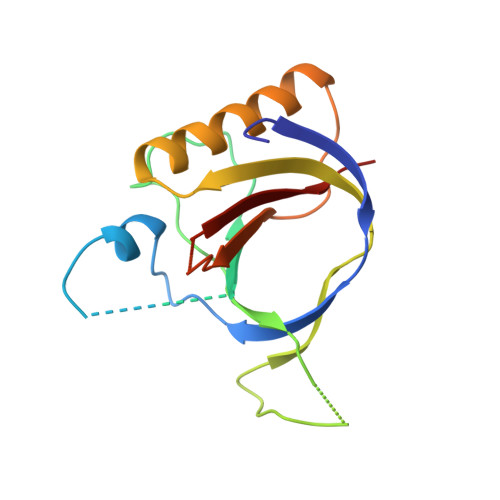Structural basis of multidrug recognition by BmrR, a transcription activator of a multidrug transporter.
Zheleznova, E.E., Markham, P.N., Neyfakh, A.A., Brennan, R.G.(1999) Cell 96: 353-362
- PubMed: 10025401
- DOI: https://doi.org/10.1016/s0092-8674(00)80548-6
- Primary Citation of Related Structures:
1BOW, 2BOW - PubMed Abstract:
Multidrug-efflux transporters demonstrate an unusual ability to recognize multiple structurally dissimilar toxins. A comparable ability to bind diverse hydrophobic cationic drugs is characteristic of the Bacillus subtilis transcription regulator BmrR, which upon drug binding activates expression of the multidrug transporter Bmr. Crystal structures of the multidrug-binding domain of BmrR (2.7 A resolution) and of its complex with the drug tetraphenylphosphonium (2.8 A resolution) revealed a drug-induced unfolding and relocation of an alpha helix, which exposes an internal drug-binding pocket. Tetraphenylphosphonium binding is mediated by stacking and van der Waals contacts with multiple hydrophobic residues of the pocket and by an electrostatic interaction between the positively charged drug and a buried glutamate residue, which is the key to cation selectivity. Similar binding principles may be used by other multidrug-binding proteins.
- Department of Biochemistry and Molecular Biology, Oregon Health Sciences University, Portland 97201-3098, USA.
Organizational Affiliation:



















